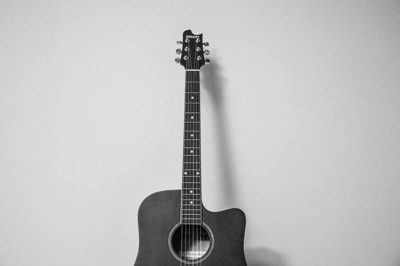How to Get Multiple Guitar Layers

This article was orrignially published in the Jan/Feb issue of worship leader, 2011.
Q: We’re trying to translate the recorded version of our favorite worship songs into something our band can play. What should we do with all those electric guitars we hear on the recording?
What, you don’t have four electric guitar players in your worship band? Well, we don’t either. But at the heart of every great recording is a great song. So the first thing to ask is, “With our church, team, and resources, is it best to emulate the recording or strip it down to a simpler rendition?” If you decide you want to go for the former, we need to figure out what to do with that section of the song that has big distorted power chords and an important high lead line or dotted eighth note delay part a la The Edge. If you left either part completely out, there would be a big hole in the most powerful section of the song!
This will sound obvious, but, use your one electric guitar player for the electric part you hear on the record that is most important, or will only work on an electric guitar. Then use another instrument to play the part that’s missing. For example, having the acoustic guitar try to play the power chords isn’t going to fly. But, you could try adding a delay pedal in line on your acoustic guitar and playing that higher The Edge part on acoustic. That could sound really cool. And that would leave your electric player to rock out the big chords that really only work on a distorted electric.
But, maybe the acoustic is busy playing the strumming part that really helps move the song along on the recording, so let’s have the keyboard player bring up a Rhodes sound with a little distortion and that same delay set to the right tempo and play the high line in chorus. Or if your keyboardist only plays acoustic piano, I’d bet that same line would sound great up high on the piano. Sure, not exactly like the record, but the gist of it will come through nicely.
Keep It Native
A side note on keyboards and electric guitars: yes, your keyboard probably has patches labeled “Power Guitar” or “Awesome RAWK Guitar” or whatever—that doesn’t mean it’s a good idea to try and play the power chord guitar parts on your keyboard. My opinion is that it’s better to use more traditional keyboard instruments to play parts that take up the same “space” in the overall mix as the part you’re trying to replace. I’ll often be playing acoustic piano in a song while the electric player is playing some big power chords. If he moves up to a higher lead line or solo, I will slide my piano part down into the range he left open and bang out some powerful chords in a rhythm similar to what he was doing.
Now obviously, if the recording has a pile of electrics, acoustic, piano, keys, loops, strings, banjo, jaw harp, and accordion all playing at once, you’ll probably have to pick and choose which are “important” in the overall scheme of things. Think about what will actually help the congregation connect with the song that they’re singing.
Dynamic Interest
Speaking of singing, emulating the recording’s arrangement for background vocals applies here too. It’s a common habit to just default to “it’s the chorus; let’s sing three-part harmony!” And while you certainly hear that on plenty of recordings, you also hear many songs with far fewer parts, whether it’s just one alto singing a simple harmony on only certain lines of chorus or nothing at all. Think about the reason you’re putting a harmony part in. Is it highlighting a lyrical concept? Is it adding energy to the arrangement? Is it to encourage the congregation to get into it a little more? Being deliberate about where your background vocals are in and out is a great way to add to the overall dynamic interest of a song. “All in, all the time” is always boring. Coming in at just the right spots is exciting and dramatic! You’ll find this might mean you need fewer singers on stage to cover only the parts that you really need. We went from a worship leader and a group of four background singers—plus me singing backgrounds at the piano—to never having more than two vocalists, and often just one.
There’s value in emulating the recording. The artist and producer very carefully designed the parts you hear for a reason. That’s why we like those recordings so much!
To find out more about Brain Steckler, visit his website.





